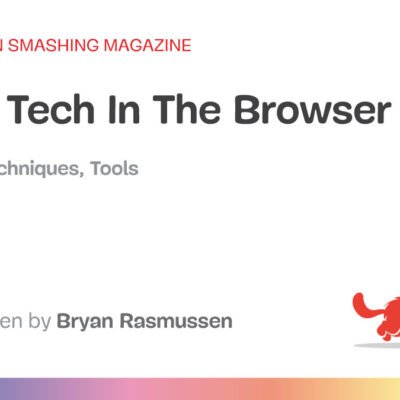Clinicians waste ~12 hours/week battling fragmented data.
That’s not a tech debt, it’s a human one. While patients wait, doctors dig through disconnected systems, re-order tests that were already done, or miss critical insights hidden in another department’s silo. Multiply that by millions of cases, and the result is staggering: delayed care, skyrocketing costs, and exhausted staff.
We’re not talking about a mild inconvenience. We’re talking about a full-blown operational crisis, where time lost isn’t just money lost, it’s outcomes lost.
And here’s the uncomfortable truth:
FHIR alone won’t fix it. APIs won’t fix it. “Interoperability task forces” won’t fix it.
AI is the only real game-changer that’s not vaporware.
Semantic AI, federated learning, and ambient intelligence are already making sense of messy, mismatched data where standards have failed. Not in theory. In production.
The clock’s ticking. The solution isn’t more pilots, it’s decisive execution.
What Is the Interoperability Crisis in HealthTech?
Let’s get this straight: interoperability isn’t a buzzword. It’s the lifeline of modern healthcare. It means secure, accurate, real-time exchange of clinical data, across EHRs, labs, imaging systems, wearables, billing platforms, payers, and more. No friction. No guessing games. Just clean data flowing where and when it’s needed.
But here’s the crisis:
The average hospital system runs on a patchwork of disconnected software, proprietary formats, outdated standards, and siloed databases. Imagine trying to solve a jigsaw puzzle where half the pieces speak different languages and the other half are locked in someone else’s drawer.
Why does this matter?
- A CT scan done in one hospital gets repeated in another.
- Allergies, labs, and critical history get lost in transit.
- Life-saving decisions get delayed or made blind.
This isn’t a tech problem. It’s a patient safety problem.
Interoperability isn’t just “important” in healthcare, it’s existential. And the crisis isn’t coming. It’s already here.
Latest Trends in HealthTech Interoperability 2025
1. AI‑Driven Semantic Interoperability
Moving beyond simple data exchange, semantic AI is stepping in to understand what data actually means. That’s how different systems finally get on the same page and patients get smarter care.
2. Federated Learning Across Institutions
AI models are now being trained across hospitals without moving raw patient data. Privacy stays intact, while the collective value skyrockets especially for rare diseases.
3. EHRs with Embedded AI Capabilities
Major EHR players (like Oracle, athenahealth, Microsoft/Nuance) are integrating AI assistants directly into workflows, auto‑documenting, summarizing, and reducing admin drag. It’s interoperability meeting automation.
4. Generative AI & Ambient Intelligence
Generative models are now drafting clinical notes, pulling in context from multiple sources, and putting them back into EHRs, essentially acting as real-time data translators.
5. Smart Device & Wearable Integration
RPM gadgets and wearables healthtech are streaming real-time data into the clinical ecosystem, if and only if systems are interoperable. AI now mediates formatting and contextual relevance, lowering clinician cognitive load.
6. Cloud APIs + Strong Security Frameworks
Secure RESTful APIs, end-to-end encryption, role-based access, these are now non-negotiables. They lay the groundwork that allows AI to access, syndicate, and harmonize data across platforms.
7. Regulatory Tailwinds & Standards Push
Europe’s new EHDS compels unified data frameworks across borders. In the U.S., states are rolling out AI health bills. The regulatory landscape is aligning to accelerate intelligent interoperability.
Top Interoperability Challenges in Healthcare
Legacy Systems and Proprietary EHRs
Most healthcare organizations are still running on digital dinosaurs, legacy systems that were never built to share data, just to store it. Proprietary EHRs make it worse by treating patient information like a locked vault. Integration? That’s extra. Access? Limited. These systems weren’t built for today’s speed or scale, and they’re holding back innovation like dead weight.
Standards Chaos: HL7v2, CDA, FHIR
HL7v2 was built for another era. CDA gave us bloated XML. FHIR promised salvation, but the dream hasn’t quite arrived. Why? Because every vendor interprets and implements standards differently. What’s labeled “FHIR-compliant” in one system becomes a broken link in another. Instead of harmony, we’ve got a messy orchestra where every instrument plays a different tune.
FHIR Is Not Plug-and-Play
Let’s stop pretending that FHIR fixes everything. Just because a system claims it supports FHIR doesn’t mean integration will be seamless. Behind the curtain, it’s often a patchwork of partial implementations, missing fields, and non-standard extensions. Teams still spend months building custom connectors to make two “FHIR-compliant” systems actually talk.
Security Friction: HIPAA Meets Croaky APIs
Security is non-negotiable, but in many systems, it’s also a speed bump. APIs meant to streamline access are clunky, inconsistent, or buried behind layers of red tape and outdated access controls. HIPAA compliance becomes a blocker instead of an enabler, creating friction at every step of data exchange.
Poor Data Quality and Inconsistent Structures
Interoperability means nothing if the data is garbage. Across systems, values are misclassified, unstructured, or stored as scanned PDFs. Lab results may be in free text in one EHR and fully coded in another. AI can’t perform magic on fractured, inconsistent data that lacks structure, accuracy, or completeness.
Semantic Inconsistency
Even when systems speak the same standard, they don’t speak the same language. One provider may log “MI” as a heart attack, while another sees it as mitral insufficiency. Without shared meaning, even perfectly structured data becomes dangerous. The lack of semantic alignment undermines trust, analytics, and outcomes.
Custom Integrations Everywhere
Hospitals don’t integrate, they improvise. Teams are constantly forced to build custom pipelines between systems, vendors, departments, and workflows. Every new app becomes a mini IT project. Every patch introduces more tech debt. It’s duct tape over duct tape, and the more you add, the more brittle everything becomes.
What Bold Organizations Must Do
Interoperability isn’t a nice-to-have. It’s the difference between reactive care and precision medicine. Between bloated infrastructure and lean, scalable systems. The healthtech players who win won’t wait for a regulatory nudge, they’ll architect their own advantage. Here’s the playbook:
Start with a System Audit
Before you can fix fragmentation, you need to see it. Inventory every system, data source, format, and failure point. Surface your silos. Expose the tech debt. No sugarcoating. This is your baseline and your launchpad.
Map to Standards That Actually Scale
Stop relying on patchwork fixes. Wherever possible, align to scalable, modern standards like FHIR and C-CDA. But don’t just check compliance boxes, ensure true implementation across workflows and touchpoints.
Inject Semantic AI Into the Middle
Semantic AI doesn’t just move data, it understands it. Deploy AI layers that reconcile different vocabularies, normalize formats, and bring meaning to fragmented clinical language. Let AI solutions bridge what standards can’t.
Use Federated Learning to Train Smarter
Federated learning lets you build AI models across institutions, without ever sharing raw patient data. That means richer insights, stronger generalizability, and full HIPAA compliance. Privacy isn’t the tradeoff—it’s built-in.
Anchor Everything to Measurable ROI
No exec cares about “data harmonization” unless it reduces clinician hours, eliminates duplicate tests, or speeds up time-to-diagnosis. Your strategy should be engineered to drive real, measurable outcomes, not academic exercises.
Report in Metrics That Boards and Investors Understand
This isn’t just an IT upgrade, it’s an enterprise-level transformation. Translate your results into metrics that resonate: operational cost savings, staff productivity lift, patient satisfaction scores, platform scalability. Show that your AI investments are moving the business, not just the backend.
Vision Check – Imagining 2030 HealthTech
- Fully Semantic Interoperability: By 2030, data silos will be obsolete. Health systems will achieve true semantic interoperability, where every EHR, device, and platform speaks the same language. No translation layers. No manual mapping. Just instant, intelligent data exchange that fuels better decisions at every touchpoint.
- Ambient Intelligence at the Bedside: Clinicians won’t be buried in screens, they’ll be guided by voice. Ambient AI will enable hands-free data retrieval, real-time clinical summaries, and contextual recommendations right at the bedside. Care becomes faster, safer, and more human.
- Real-Time Public Health Synergy: Outbreaks won’t catch systems off guard. Unified datasets will power real-time disease surveillance, allowing public health officials to respond instantly with data-driven strategies. AI won’t just report the news, it’ll predict what’s coming next.
But that future doesn’t build itself. It takes bold moves now, architecting smarter systems, training intelligent models, and operationalizing data as a strategic asset. That’s where ISHIR steps in. Our AI and Data Analytics services are engineered to help healthcare organizations break out of legacy limitations and accelerate toward a connected, insight-driven ecosystem. We don’t just plug into your stack, we future-proof it.
Tired of watching your clinical teams drown in documentation?
Automate the busywork, elevate care, and build AI-powered workflows with ISHIR.
The post The Interoperability Crisis in HealthTech: Can AI Help Connect the Dots? appeared first on ISHIR | Software Development India.





